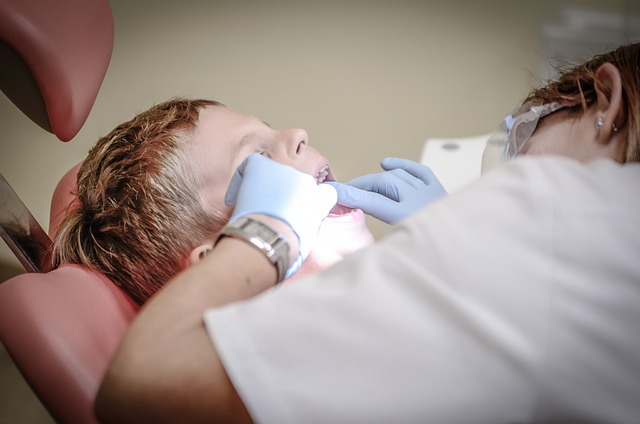Orthodontic Solutions: How to Replace Invisalign Retainer
Are you looking for a reliable and effective way to replace your Invisalign retainer? Look no further! In this article, we will guide you through the orthodontic solutions available to ensure a seamless transition while maintaining a confident smile. Whether you’re a long-time Invisalign user or exploring alternatives, our knowledgeable and neutral approach will provide you with all the essential information you need. Say goodbye to any worries or confusion about the replacement process, as we break it down into clear and manageable steps. Get ready to regain control of your orthodontic journey and discover the perfect solution for your Invisalign retainer replacement.
1. Understanding the Importance of Replacing Your Invisalign Retainer
Replacing your Invisalign retainer is an essential aspect of maintaining a healthy and effective orthodontic treatment. The retainer plays a crucial role in ensuring that your teeth retain their new alignment after completing the Invisalign treatment. Here are a few reasons why replacing your Invisalign retainer is of utmost importance:
- Maintaining proper tooth alignment: Your Invisalign retainer is designed to hold your teeth in their corrected position. Over time, the retainer may become worn out or lose its shape, which can lead to your teeth shifting back to their original misalignment. By replacing your retainer as recommended by your orthodontist, you can ensure that your teeth stay in their desired position.
- Preserving treatment results: Invisalign treatment requires time, effort, and investment. After completing the treatment, you will want to enjoy the benefits of your straightened teeth for a long time. Regularly replacing your retainer helps in preserving the treatment results and prevents any regression in tooth alignment.

2. Step-by-Step Guide: How to Replace Your Invisalign Retainer
Replacing your Invisalign retainer is a simple process that you can easily do at home. Follow these step-by-step instructions to ensure a smooth and successful replacement:
1. Remove the old retainer:
- Start by gently removing your old retainer from your mouth.
- Wash your hands thoroughly with soap and water before handling the retainer.
- Using your fingertips, carefully lift the retainer off your teeth, starting from the back and working your way forward.
- Be cautious not to bend or twist the retainer as you remove it.
- Place the old retainer in a safe and clean location, away from any potential damage.
2. Clean the retainer:
- Before inserting the new retainer, it’s crucial to clean the old one properly.
- Rinse the retainer with lukewarm water to remove any debris or residue.
- Gently brush the retainer using a soft toothbrush and a non-abrasive toothpaste or retainer cleaner.
- Make sure to clean all surfaces of the retainer, including the areas that come into contact with your teeth.
- Rinse the retainer thoroughly with water to remove any cleaning agents.

3. Exploring Different Orthodontic Solutions for Invisalign Retainer Replacement
Invisalign retainers are a popular choice for orthodontic treatment due to their discreet appearance and comfortable fit. However, there may come a time when a replacement is needed. Fortunately, there are several different orthodontic solutions available for those seeking to replace their Invisalign retainers.
One option for replacing an Invisalign retainer is to visit a certified Invisalign provider who can create a new retainer specifically tailored to your teeth. These providers have the expertise and technology to ensure that your new retainer fits properly and effectively straightens your teeth. Another alternative is to consider clear aligners from other reputable brands, such as ClearCorrect or SmileDirectClub. These aligners work similarly to Invisalign and can provide an effective solution for retainer replacement. It is important to consult with an orthodontist or dentist to determine which option is best for your specific needs and goals.

4. Expert Tips: Maintaining Your New Invisalign Retainer
Once you’ve invested in a new Invisalign retainer, it’s crucial to properly maintain it to ensure the best results and prolong its lifespan. Here are some expert tips to help you take care of your new retainer:
1. Clean your retainer daily: To keep your Invisalign retainer free from bacteria and plaque buildup, make sure to clean it thoroughly every day. Use a soft toothbrush or a retainer brush with mild soap or non-abrasive toothpaste. Rinse it well to remove any residue before putting it back in your mouth.
2. Avoid eating or drinking with your retainer: While it may be tempting to keep your retainer on while snacking or sipping on beverages, it’s best to remove it. Food particles can get trapped in the retainer, leading to bad breath and potential oral health issues. Stick to drinking plain water while wearing your retainer, and always remember to take it out before enjoying a meal.

5. Key Considerations When Choosing a Replacement Invisalign Retainer
Choosing the right replacement Invisalign retainer is an important decision to ensure the continued success of your orthodontic treatment. Here are some key considerations to keep in mind:
- Material: Opt for retainers made from high-quality, durable materials such as clear medical-grade plastic. This ensures long-lasting and comfortable wear.
- Fit: A proper fit is crucial for the effectiveness of your retainer. Look for options that offer customizable fit, ensuring it matches your teeth alignment perfectly.
- Comfort: Since you’ll be wearing your retainer for several hours each day, it’s essential to choose one that is comfortable. Look for smooth edges and a design that doesn’t cause irritation to your gums or teeth.
Another crucial factor to consider when selecting a replacement Invisalign retainer is the level of convenience it offers:
- Removability: Opt for a retainer that is easy to remove and insert, allowing you to maintain good oral hygiene and enjoy meals without restrictions.
- Easy cleaning: Look for a retainer that can be easily cleaned using simple methods, such as gentle brushing or soaking in a retainer cleaning solution.
- Longevity: Choose a retainer that is designed to last. Look for options that come with a warranty or guarantee, ensuring its durability and preventing frequent replacements.
6. Overcoming Common Challenges in Replacing Your Invisalign Retainer
Replacing your Invisalign retainer is an important aspect of maintaining the progress you’ve made in your orthodontic treatment. However, it can sometimes present challenges that may seem daunting at first. Fear not, as we are here to help you overcome these common hurdles effortlessly.
One common challenge is dealing with a tight-fitting retainer. If you find that your new retainer feels too snug and causes discomfort, don’t panic. This is a normal occurrence as your teeth may have subtly shifted since your last retainer. To address this, try gently biting down on the retainer or using your fingers to press it into place. If the tightness persists, consider contacting your orthodontist, who can provide further guidance and possibly make adjustments to ensure a comfortable fit.
- Another challenge you may encounter is difficulty inserting your new retainer. This can be due to the shape or size of the retainer, making it tricky to position it properly. One helpful tip is to use your fingertips to guide the retainer into place, applying gentle pressure on the edges until it snaps snugly onto your teeth.
- If you experience difficulties with aligning the retainer with your teeth, try starting from the back and gradually working your way forward. This method allows for better control and reduces the risk of accidentally bending or damaging the retainer.
- Remember, practice makes perfect. Don’t be discouraged if it takes a few tries to get the hang of inserting your new retainer. With time, you’ll become more comfortable and proficient in the process.
By being aware of these common challenges and armed with these helpful tips, you can easily overcome any obstacles that may arise while replacing your Invisalign retainer. Remember, if you have any concerns or questions, don’t hesitate to reach out to your orthodontist for assistance. Your commitment to proper retainer care ensures the longevity and success of your orthodontic treatment.
7. The Role of Orthodontists in Assisting with Invisalign Retainer Replacements
Orthodontists play a crucial role in assisting patients with Invisalign retainer replacements. These dental professionals are specialized in the field of orthodontics and have the expertise to ensure that patients receive the best care and guidance throughout the process. Here are some key ways in which orthodontists assist with Invisalign retainer replacements:
1. Evaluation and diagnosis: Orthodontists are trained to assess the condition of a patient’s teeth and determine if a retainer replacement is necessary. They carefully evaluate the alignment and movement of the teeth, considering factors such as bite, crowding, or gaps between teeth. Through a thorough examination, orthodontists can diagnose any issues and recommend the appropriate treatment plan.
2. Customized treatment: Orthodontists work closely with patients to create a personalized treatment plan for their Invisalign retainer replacement. They take impressions or use advanced 3D scanning technology to create digital models of the patient’s teeth. This enables them to design a retainer that fits perfectly and provides optimal results. Orthodontists also guide patients in wearing and caring for their retainers, ensuring that they understand how to maintain good oral hygiene and effectively use the retainer to maintain their new smile.
Frequently Asked Questions
Q: How can I replace my Invisalign retainer?
A: Replacing your Invisalign retainer is a straightforward process that can be done by following a few simple steps.
Q: What are the signs that indicate a replacement is needed?
A: There are a few signs that indicate it may be time to replace your Invisalign retainer. These include visible wear and tear, cracks or breakages, discomfort or pain while wearing it, or if the retainer no longer fits properly.
Q: Can I replace my Invisalign retainer at home?
A: While it is possible to replace your Invisalign retainer at home, it is recommended to consult with your orthodontist or dentist. They have the expertise and knowledge to ensure the replacement process is done correctly and that the new retainer fits properly.
Q: What steps should I follow to replace my Invisalign retainer at home?
A: If you choose to replace the retainer at home, start by thoroughly cleaning the old retainer. Then, take accurate measurements of your teeth using a dental impression kit or consult your orthodontist for guidance. Finally, order a new retainer from a trusted supplier and follow the instructions provided for fitting it correctly.
Q: Are there any risks involved in replacing my Invisalign retainer at home?
A: While replacing your Invisalign retainer at home is possible, there are risks involved if it is not done correctly. Ill-fitting retainers can lead to discomfort, pain, or even compromise the effectiveness of your orthodontic treatment. It is always best to consult with a professional to ensure a proper replacement.
Q: How often should I replace my Invisalign retainer?
A: The frequency of replacing your Invisalign retainer depends on various factors, including the type of retainer you have and your orthodontist’s recommendations. Typically, it is advised to replace your retainer every 6 to 12 months or as directed by your orthodontist.
Q: Can I extend the lifespan of my Invisalign retainer?
A: Yes, there are steps you can take to extend the lifespan of your Invisalign retainer. These include proper cleaning and maintenance, avoiding exposure to high temperatures, and handling the retainer with care. Regular check-ups with your orthodontist can also help identify any issues early on and ensure timely replacements if needed.
Q: What should I do if my Invisalign retainer breaks or becomes damaged?
A: If your Invisalign retainer breaks or becomes damaged, it is important to contact your orthodontist or dentist immediately. They will assess the situation and provide guidance on whether a replacement is necessary or if it can be repaired.
Q: Can I wear my old Invisalign retainer while waiting for a replacement?
A: If your Invisalign retainer is damaged or no longer fits properly, it is not recommended to continue wearing it while waiting for a replacement. Wearing an ill-fitting or damaged retainer can be uncomfortable and may compromise the results of your orthodontic treatment. It is best to consult with your orthodontist for guidance on how to proceed in such situations.
Q: Are there alternative options to Invisalign retainers?
A: Yes, there are alternative options to Invisalign retainers, such as traditional wire retainers or other clear aligner systems. It is best to consult with your orthodontist to determine the most suitable option for your specific orthodontic needs.
Final Thoughts
In conclusion, replacing your Invisalign retainer doesn’t have to be a complicated or daunting task. By following a few simple steps, you can ensure the longevity of your orthodontic treatment and maintain a healthy smile. Here are the key takeaways from this article:
1. Regularly inspect your retainer: Keep a close eye on your retainer for any signs of wear and tear. If you notice any cracks, chips, or damage, it’s time for a replacement.
2. Consult your orthodontist: Seek professional guidance when it comes to replacing your Invisalign retainer. Your orthodontist will provide you with the most accurate and suitable replacement options based on your specific needs.
3. Follow proper cleaning techniques: Maintain a clean retainer by regularly brushing it with a soft toothbrush and mild soap. Avoid using hot water or harsh chemicals, as they can damage the retainer.
4. Consider the replacement alternatives: In addition to Invisalign, there are other orthodontic solutions available, such as clear aligners or traditional braces. Discuss these options with your orthodontist to determine which one best suits your needs.
Remember, taking care of your retainer is crucial to the success of your orthodontic treatment. By staying proactive and seeking professional guidance, you can ensure a smooth transition and continue to enjoy a confident, beautiful smile.





